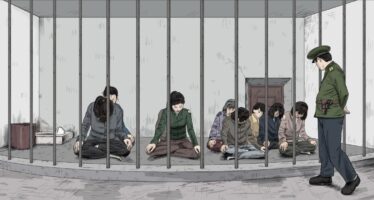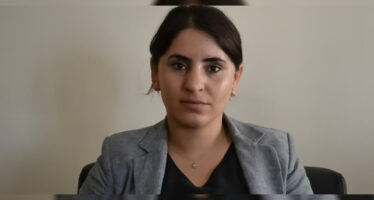Tour of Guantánamo Offers a Look, but Little Else
![]()
 Richard Perry/The New York Times
Richard Perry/The New York Times
GUANTÁNAMO BAY, Cuba — Welcome to Guantánamo Bay, where your tour guide will never leave your side but may not be able to answer any of your questions.
Several times a month, the military parades groups of journalists through the detention camps at the naval station here in an effort to clear up what it says are “common misrepresentations” about the way the camps’ 176 detainees are treated. The tours — part of a package deal complete with lodging, ground transportation and three meals a day from the Navy mess hall — offer what the Pentagon promotes as a behind-the-scenes peek into one of the government’s most secretive missions in the campaign against terror.
Gleaning any information about the system of camps and military tribunals operating in the constitutional gray area that is Guantánamo Bay has always been difficult for the reporters and nongovernment observers working here. And this week, as the first detainee trial since President Obama took office opened, the question of access for journalists has become a particularly tense point of dispute.
Military officials and lawyers for news organizations that are fighting the Pentagon’s ground rules, including The New York Times, are working to agree on conditions that permit greater openness. For now, though, the journalists covering the trial of Omar Khadr, who was captured on the battlefield in Afghanistan at age 15 in 2002, operate in an environment where access to the most basic information about the identities of the detainees and details of the legal proceedings against them are kept from the public.
But so, too, are even innocuous-seeming details about daily life inside the Guantánamo detention camps — the military’s slogan for the operation, “Safe, Humane, Legal, Transparent,” notwithstanding.
Over the course of the two-day tours, journalists are shown reading materials from the detainee library, where Harry Potter and other novels are available in Arabic. Taking pictures of the books is fine as long as they do not reveal the code the librarian uses to file them. Pictures of sailboats and pieces of fruit drawn by the detainees, however, are off limits. The military is concerned that detainees might have hidden messages in them. “But at this time you are free to enjoy them,” a military guide told journalists passing through last week.
Journalists can taste baklava from the kitchen where detainees’ meals are prepared and photograph “comfort items” the detainees receive, like prayer rugs and Sudoku games. But don’t ask about the brand of hot sauce the detainees use.
The camps are inaccessible to the general public; the only way most people can learn about what goes on there is through the eyes of the journalists who are granted permission by the Pentagon to take the tours. But what the media are allowed to see is so controlled that it can raise more questions than answers. Reporters are not allowed to speak to detainees, nor can photographers take pictures that could identify them, even though many of their names have become public through military legal proceedings like those this week.
“A lot of information is privileged and need-to-know,” explained Cmdr. Bradley A. Fagan, a public affairs director for the Navy in Guantánamo Bay. “And there is just some information we won’t give out.”
Commander Fagan and his staff say repeatedly that they go to great lengths to accommodate the news media, and they seem to feel they are often punished for their efforts at transparency. On a dry erase board in Commander Fagan’s office last week was a note to his staff: “Top story this week: Rules inconvenience reporters.”
During their visits, journalists must agree to limits on what they can report and document. Among the biggest sources of disagreement between the media and the public affairs officers on the base have been rules that restrict what kinds of photos can be taken. Every photo in a camera brought by a journalist to the naval base is reviewed — regardless of whether it was taken there or not. This has led to some awkward moments between military censors and the reporters and photographers who have come to Guantánamo with personal pictures on their cameras.
“I’ll be like, ‘O.K., just tell me when I can look,’ ” said Sgt. Cody Black of the Army, who reviews photos and video, as he recalled the times he had seen more than he bargained for.
The distinctions between what is an acceptable photo and what is not can seem contradictory. Pictures of occupied guard towers will get through the censors. Pictures of empty guard towers will not. The military says this is so that enemies of the United States cannot identify which towers are manned and which are not, even though guards are constantly rotated in and out of towers. Pictures of parts of the detention facilities where there are no guard towers are generally acceptable, as are pictures of signs that say “No Photography.”
Related Articles
North Korea: Sexual Violence Against Women by Officials
![]()
Impunity for Assault and Rape by Men in Power
“El feminismo no muerde”
![]()
Dalia Acosta entrevista a la antropóloga y feminista mexicana MARCELA LAGARDEHay etapas en que se pierde la memoria histórica del
La cárcel de Imrali es un laboratorio de represión
![]()
Newroz Uysal, abogada de Abdullah Öcalan, ha sido la ultima a ver el líder kurdo en 2019




